If you’re embarking on a home renovation or building a new space, selecting the right flooring is a crucial decision that can impact the look and feel of the entire room. With so many types of flooring available, it can be overwhelming to determine which one is right for you. In this article, we’ll explore 15 different types of flooring, including their materials, properties, uses, pros, and cons. From marble to bamboo, concrete to carpet, we’ve got you covered.


Understanding the different flooring materials, properties, uses, pros, and cons can help you make an informed decision and achieve the desired aesthetic for your space. Whether you’re looking for durability and low maintenance or elegance and luxury, there’s a flooring option for you. So, let’s dive in and explore the world of flooring!
What is Flooring?
If you’re considering renovating your home or building a new one, you’re likely to encounter the term “flooring” at some point. But what exactly is flooring? In simple terms, flooring refers to the permanent covering of a floor, providing a supportive and decorative surface. It serves as the foundation of a room and has a significant impact on the overall look and feel of a space.




















Flooring materials are available in a variety of options, each with its own set of unique properties and characteristics. From hardwood and carpet to tile and concrete, the options are practically endless. Choosing the right type of flooring material for your home or office can be overwhelming, but understanding the purpose of flooring and what it entails can help make the decision-making process easier.
The purpose of flooring is twofold – it is both functional and aesthetic. From a functional standpoint, flooring provides a stable surface that can withstand heavy foot traffic, furniture, and appliances. It also helps to insulate a room and can improve indoor air quality. From an aesthetic viewpoint, flooring serves as a decorative element that can enhance the overall style and ambiance of a living or working space.


Whether you’re looking to create a cozy living room or a professional working environment, choosing the right type of flooring material is crucial. By considering factors such as durability, maintenance requirements, and overall aesthetics, you can select a flooring material that not only looks great but also aligns with your specific needs and preferences.
Marble Flooring: Types, Uses, Pros & Cons
If you’re looking to add a touch of elegance and luxury to your space, marble flooring might be the option for you. Marble is a natural stone that comes in an array of colors and patterns, making every piece unique.
There are different types of marble flooring to consider, including Carrara marble, Calacatta marble, and Crema Marfil marble. Carrara marble is known for its grey color and fine veining, while Calacatta marble has bold, thick veining and a whiter appearance. Crema Marfil marble, on the other hand, has a creamy beige color and minimal veining.




















Marble flooring is commonly used in entryways, bathrooms, and kitchen countertops due to its durability and resistance to moisture and heat. It’s important to note, however, that marble is susceptible to scratching and staining. It also requires regular sealing to prevent damage from spills and moisture.
The pros of marble flooring include its natural beauty and uniqueness, high durability, and heat resistance. However, the cons include its susceptibility to scratching and staining, as well as its high cost compared to other flooring options.
Consider the type of marble flooring that best suits your space and needs, and be prepared for the maintenance required to keep it looking its best.


Vitrified Tile: Types, Uses, Pros & Cons
Vitrified tiles are a popular flooring option due to their durability and low maintenance requirements. They are a type of ceramic tile that is fired at high temperatures to create a dense, non-porous material that is resistant to stains and scratches. Vitrified tiles come in a variety of sizes, colors, and finishes, making them versatile and suitable for many different applications.
There are two main types of vitrified tiles: glazed vitrified tiles (GVT) and double-charged vitrified tiles (DCVT). GVT has a layer of glaze applied to the surface, which gives it a glossy finish and makes it easier to clean. DCVT has a double layer of pigment added to the surface, which creates a pattern that goes all the way through the tile, making it more durable and scratch-resistant.
| Type | Pros | Cons |
|---|---|---|
| GVT | Easy to clean, glossy finish, available in a wide range of designs and colors | Less scratch-resistant than DCVT, can be slippery when wet |
| DCVT | Durable, scratch-resistant, and available in a wide range of designs and colors | More expensive than GVT, can be harder to clean due to the textured surface |
Vitrified tiles are suitable for both residential and commercial use, including high-traffic areas like hallways and entryways. They are commonly used in kitchens and bathrooms due to their resistance to moisture and stains.
Some of the pros of choosing vitrified tiles as a flooring material include:
- Durable and long-lasting
- Low maintenance and easy-to-clean
- Available in a wide range of designs and colors
- Resistant to scratches, stains, and moisture




















However, there are also some cons to consider if you are thinking about using vitrified tiles in your space:
- Can be slippery when wet
- More expensive than other types of tile
- Harder to cut and install than other types of tile
- Some types can be harder to clean due to textured surface
Overall, vitrified tiles are a durable and versatile flooring option that can add style and functionality to your space. Consider the pros and cons carefully when choosing a flooring material for your home or business.
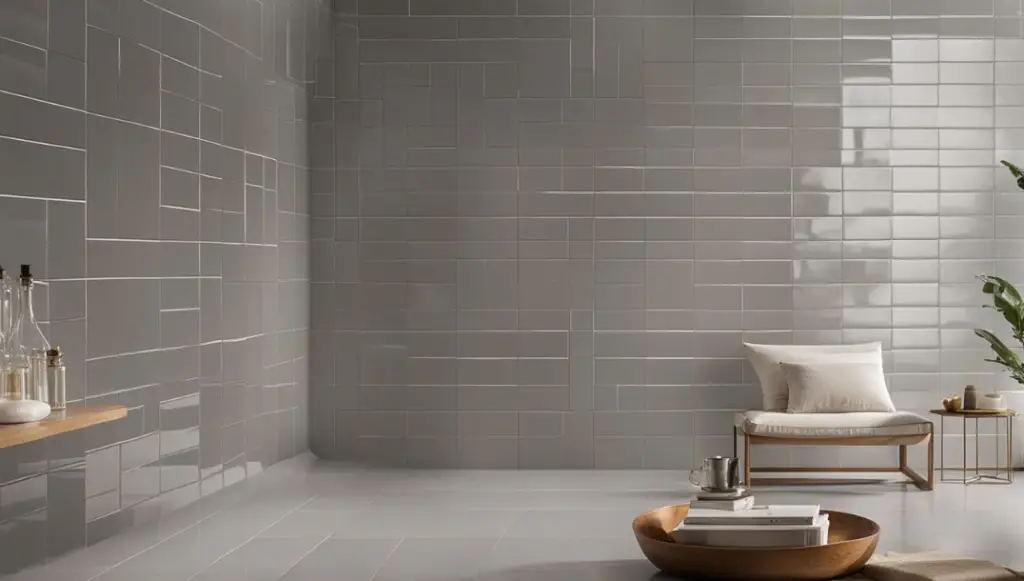

Vinyl: Types, Uses, Pros & Cons
When it comes to affordable and versatile flooring options, vinyl flooring is a popular choice. There are various types of vinyl flooring available, such as luxury vinyl planks (LVP) and vinyl sheets. These options come in a variety of colors and patterns, allowing you to customize your flooring to match your decor and style.
One of the primary uses for vinyl flooring is in high-traffic areas of the home, such as entryways, hallways, and kitchens. Vinyl is also a popular choice for bathrooms and laundry rooms, as it is resistant to moisture and easy to clean.
One of the significant benefits of vinyl flooring is its low maintenance requirements. It is durable and resistant to scratches, stains, and water damage, making it a popular option for households with children and pets. Additionally, vinyl is relatively easy to install and replace, making it a cost-effective choice for those on a budget.
However, vinyl flooring does come with a few drawbacks. It can emit volatile organic compounds (VOCs) during installation, which could be harmful to your health. Additionally, vinyl flooring can dent or gouge if heavy objects are dropped on it, and it may fade over time due to exposure to sunlight.


| Pros | Cons |
|---|---|
| Durable and resistant to scratches, stains, and water damage | May emit VOCs during installation |
| Easy to install and replace | Can dent or gouge if heavy objects are dropped on it |
| Low maintenance requirements | May fade over time due to exposure to sunlight |
Hardwood: Types, Uses, Pros & Cons
Hardwood flooring is a popular choice due to its timeless beauty and durability. There are various types of hardwood flooring, including oak, maple, and walnut, each with unique properties and characteristics.




















Oak hardwood flooring is known for its strength and resistance to wear and tear. It has a distinctive grain pattern that adds character to any space. Maple hardwood flooring is known for its light color and durability, making it an excellent choice for high-traffic areas. Walnut hardwood flooring has a rich, dark color and unique patterns that add warmth and elegance to any room.
Hardwood flooring is versatile and can be used in various residential and commercial settings. It is popular in living rooms, dining rooms, and bedrooms. The natural warmth and beauty of hardwood flooring can add value to any property.
However, there are also drawbacks to consider. Hardwood flooring requires regular maintenance, including polishing and refinishing, to stay in top condition. It is also susceptible to scratches and water damage, which can be costly to repair.
| Pros: | Cons: |
|---|---|
| – Timeless beauty – Durability |
– High maintenance – Susceptible to scratches and water damage |
Overall, hardwood flooring is an excellent choice for those seeking natural beauty and durability in their flooring options. Keep in mind the upkeep and potential for damage when considering hardwood as your flooring material.


Granite: Types, Uses, Pros & Cons
Granite flooring is a popular choice for homeowners due to its natural beauty and durability. This type of flooring is made from igneous rocks that are formed due to the cooling of lava or magma.
There are different types of granite flooring available, such as black granite, white granite, blue granite, and green granite. Each type of granite has unique characteristics that make it suitable for different uses.
| Type of Granite | Uses | Pros | Cons |
|---|---|---|---|
| Black Granite | Countertops, flooring | Durable, stain-resistant, easy to maintain | Expensive, heavy, requires professional installation |
| White Granite | Bathroom flooring, backsplashes | Heat-resistant, scratch-resistant, adds value to home | Not ideal for high-traffic areas, may require sealing |
| Blue Granite | Outdoor flooring, pool decks | Non-slip surface resists fading, water-resistant | May chip or crack in extreme temperatures |
| Green Granite | Kitchen countertops, flooring | Heat-resistant, scratch-resistant, unique coloring | May require sealing, expensive |




















Granite flooring is a great option for high-traffic areas like kitchens, entryways, and living rooms. It also adds value to your home due to its natural beauty. However, granite flooring is more expensive than other flooring options and can be heavy and difficult to install.
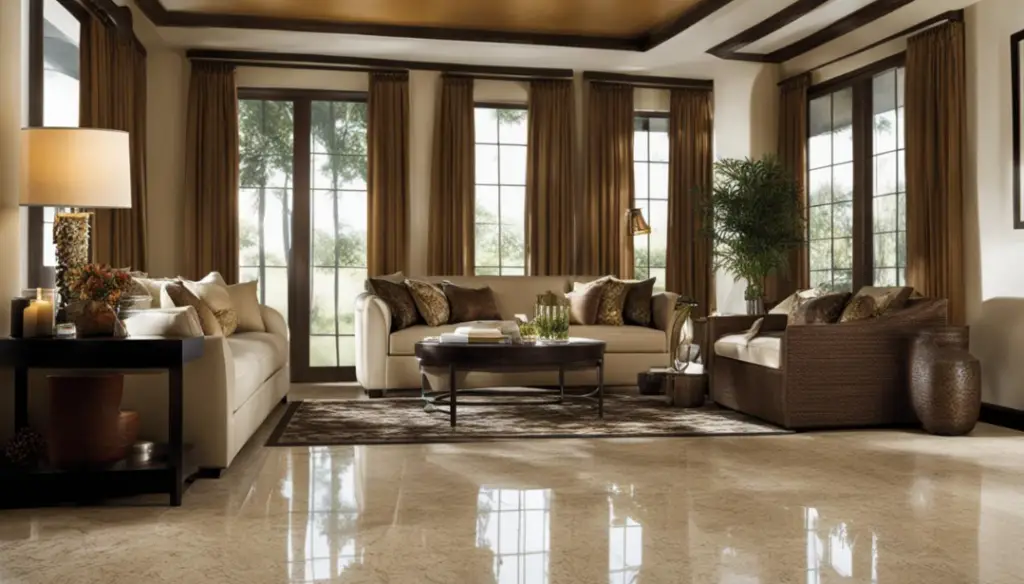

If you’re considering granite flooring for your home, weigh the pros and cons carefully to make an informed decision that fits your budget and lifestyle.
Bamboo: Types, Uses, Pros & Cons
If you’re looking for a unique, eco-friendly flooring option, bamboo flooring is worth considering.
There are two main types of bamboo flooring: solid-strand woven and engineered bamboo. Solid-strand woven bamboo is made by compressing and weaving bamboo strands together, resulting in a strong and durable material. Engineered bamboo, on the other hand, is made by layering bamboo veneers on top of each other and applying a protective coating.
Bamboo flooring can be used in a variety of areas in your home, such as living rooms, bedrooms, and kitchens. It also works well in commercial spaces like offices and retail stores.
Bamboo flooring has several pros. It’s eco-friendly, as bamboo is a renewable resource that grows quickly. It’s also durable and resistant to scratches and dents. Additionally, bamboo flooring is easy to maintain and clean.




















However, there are also a few cons to consider. While bamboo is durable, it can still be susceptible to water damage, so it’s not recommended for bathrooms or other areas with high moisture levels. Bamboo flooring can also be prone to fading and discoloration if exposed to direct sunlight for extended periods.
| Pros | Cons |
|---|---|
| Eco-friendly | Prone to water damage |
| Durable and scratch-resistant | Fades in direct sunlight |
| Easy to maintain and clean |
Overall, bamboo flooring is a unique and sustainable option for your flooring needs. Consider its durability, eco-friendliness, and maintenance requirements when making your decision.
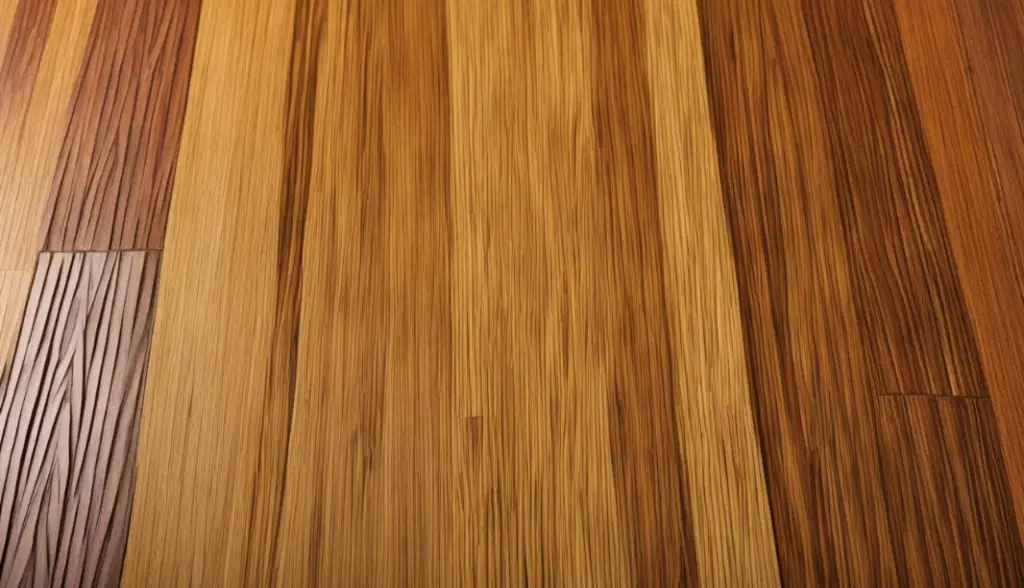

Concrete: Types, Uses, Pros & Cons
Concrete flooring is a popular choice due to its strength, versatility, and low cost. This type of flooring is made by mixing cement, water, and aggregate, and can be customized to achieve different colors and finishes. There are several types of concrete flooring, each with its unique properties and characteristics.
Types of Concrete Flooring
| Type | Description |
|---|---|
| Polished Concrete | A glossy finish is achieved by grinding the surface with specialized tools. It is durable and low maintenance. |
| Stained Concrete | Created by applying a chemical stain to the surface which reacts with the concrete, resulting in a unique, mottled appearance. It is available in a variety of colors and is suitable for indoor and outdoor use. |
| Stamped Concrete | Designed to resemble other materials such as stone, brick, or wood. It is durable and requires little maintenance. |
Concrete flooring is suitable for both residential and commercial spaces. It is commonly used in garages, basements, and warehouses due to its durability. It can also be used for outdoor spaces such as patios and pool decks due to its resistance to water and weather elements.
Pros and Cons of Concrete Flooring
Pros:
- Durable and long-lasting.
- Customizable in terms of color and finish.
- Low-maintenance, easy to clean.
- Resistant to water and weather elements.




















Cons:
- Hard and cold. Concrete flooring can be uncomfortable to stand on for long periods and can be especially uncomfortable during colder months.
- Prone to cracking. While concrete is strong and durable, it can crack over time due to shifting and settling.
- Installation can be difficult. Proper installation of concrete flooring requires specialized tools and expertise, which can increase the cost.
Overall, concrete flooring is a versatile and cost-effective option for those seeking a durable and customizable flooring solution. However, it may not be the best choice for those seeking a soft or comfortable flooring option.


Laminate: Types, Uses, Pros & Cons
Laminate flooring is a popular option that offers the look of hardwood without the high price tag. It is made up of layers of pressed wood and features a photographic image of wood grain, stone, or other designs on the top layer. Laminate flooring is available in various types, each with its unique properties.
Types of Laminate Flooring
There are two main types of laminate flooring: engineered wood laminate and plastic laminate. Engineered wood laminate is made up of a thin layer of real hardwood on top of a composite core. Plastic laminate, on the other hand, is entirely made up of synthetic materials. Plastic laminate is more durable and resistant to moisture than engineered wood laminate, making it more suitable for high-traffic areas and areas prone to moisture, such as bathrooms and kitchens.
Uses of Laminate Flooring
Laminate flooring is a versatile option that can be used in various areas of the home. It is a popular option for living rooms, bedrooms, and hallways. Plastic laminate is also a popular choice for bathrooms and kitchens due to its moisture-resistant properties. Laminate flooring can also be used in commercial settings, such as office buildings and retail stores.




















Pros of Laminate Flooring
- Laminate flooring is an affordable option, making it a popular choice for those on a budget.
- It is a low-maintenance option that is easy to clean and maintain.
- Laminate flooring is available in various designs and colors, allowing homeowners to achieve their desired aesthetic without breaking the bank.
- It is relatively easy to install, making it a popular choice for DIY projects.
Cons of Laminate Flooring
- Laminate flooring cannot be sanded or refinished, making it less durable than hardwood flooring.
- It is not as soundproof as other flooring options, such as carpet.
- Laminate flooring can be slippery when wet, making it less suitable for households with small children or elderly individuals.
- It may not add as much value to a home as hardwood flooring.
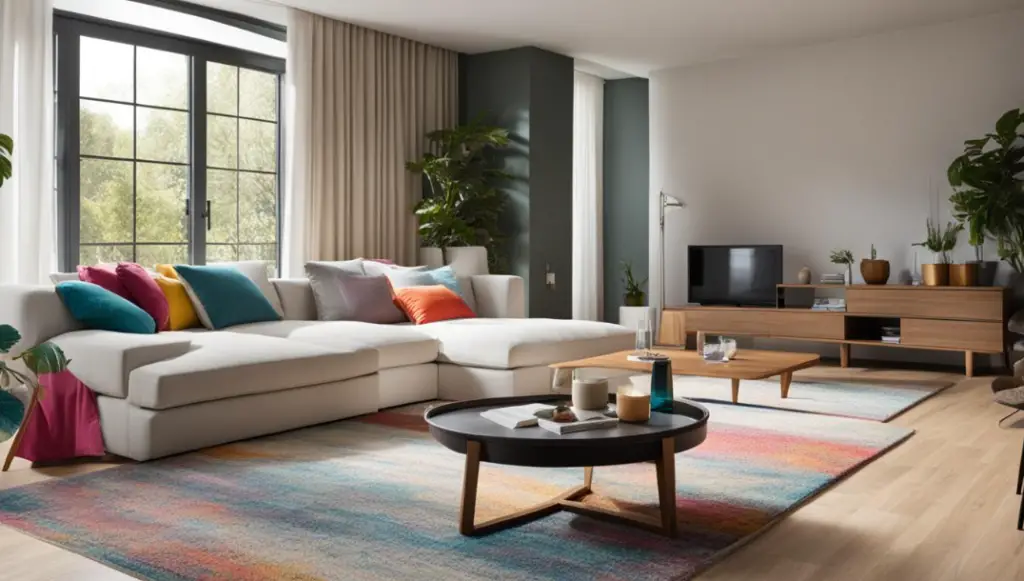

Linoleum: Types, Uses, Pros & Cons
Linoleum flooring is a popular option that offers durability, eco-friendliness, and a unique appearance. There are several types of linoleum flooring, including sheet linoleum and tile linoleum. Sheet linoleum is a single large sheet of flooring, while tile linoleum comes in small squares that can be pieced together to form a pattern.
The uses of linoleum flooring are vast and varied. It is commonly found in kitchens, bathrooms, and other high-traffic areas due to its durability. Linoleum is also preferred in hospitals and schools for its hygienic properties and easy maintenance. Additionally, it can be found in residential spaces due to its eco-friendliness and the unique patterns it can create.
There are several pros and cons to choosing linoleum flooring. One of the biggest pros is its eco-friendliness, as it is made from natural materials like linseed oil and cork. Additionally, linoleum is durable and long-lasting, typically lasting up to 40 years with proper care. However, linoleum flooring can be prone to scratches and can fade over time when exposed to sunlight. It can also be difficult to install and requires professional installation to ensure a proper fit.
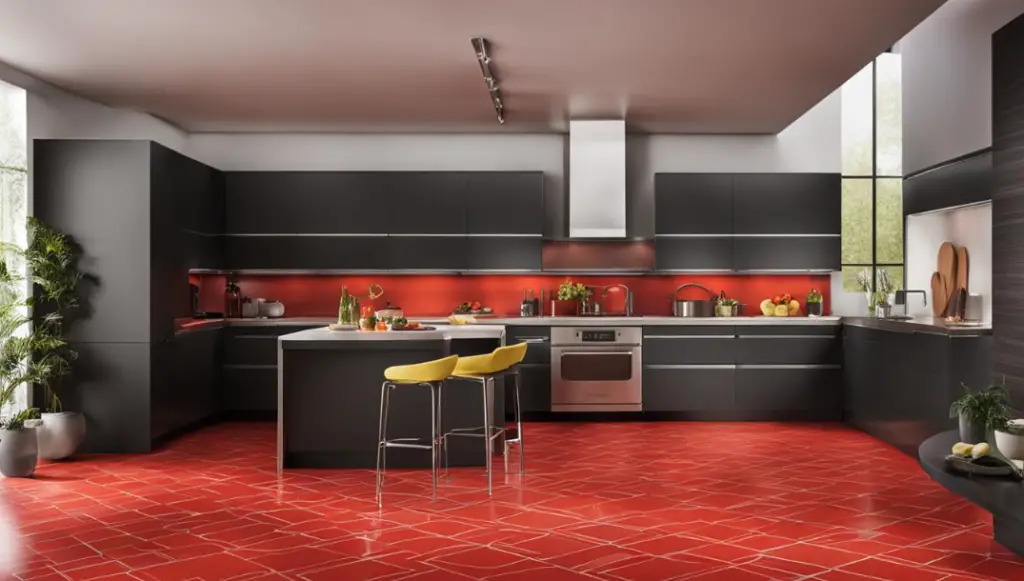

Overall, linoleum flooring is an excellent option for those seeking an eco-friendly and durable flooring choice. Consider the pros and cons and the different types of linoleum flooring when choosing the right option for your space.
Terrazzo: Types, Uses, Pros & Cons
Terrazzo flooring is a unique and artistic flooring option that has been around for centuries. It consists of chips of marble, quartz, granite, glass, or other materials, poured with a cementitious binder, creating a smooth surface. Terrazzo flooring offers a variety of design options, ranging from classic to contemporary, and can be customized to fit your space’s aesthetic.
There are two types of terrazzo flooring: traditional terrazzo and engineered terrazzo. Traditional terrazzo is poured onsite, while engineered terrazzo is precast in a factory and installed onsite. Traditional terrazzo is more customizable, while engineered terrazzo is more consistent in terms of quality and requires less installation time.




















Terrazzo flooring can be used in various residential and commercial settings, such as lobbies, hallways, and patios. Terrazzo flooring is durable, easy to clean, and resistant to water and stains. However, it can be prone to cracking and chipping if not properly installed.
| Pros | Cons |
|---|---|
| Durable and long-lasting | Prone to cracking and chipping if not properly installed |
| Customizable design options | May require regular sealing and polishing |
| Resistant to water and stains | Can be expensive compared to other flooring options |
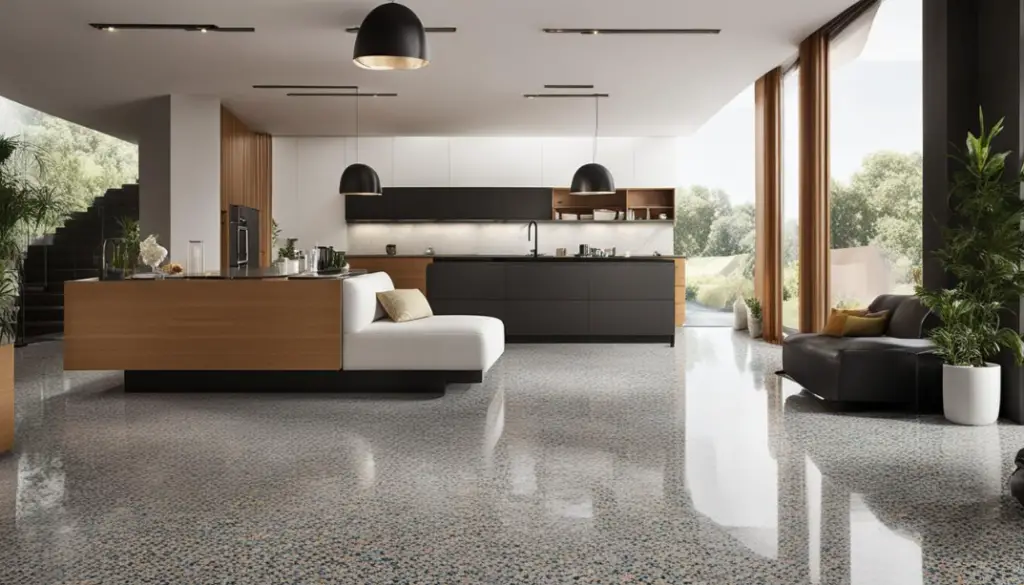

Overall, terrazzo flooring is a great option for those looking for a unique and customizable flooring option. It offers durability, easy maintenance, and a variety of design options. However, it can be expensive and requires proper installation and maintenance to avoid any potential issues.
Red Oxide: Types, Uses, Pros & Cons
Red oxide flooring is a traditional flooring option that adds character and warmth to any space. There are two main types of red oxide flooring: cement red oxide and epoxy red oxide. Cement red oxide is created by mixing cement, sand, and red oxide pigment, while epoxy red oxide is made by mixing epoxy resin and red oxide pigment.
The uses of red oxide flooring are typically found in traditional settings, such as heritage homes and cultural buildings. It is a popular choice for those who want to maintain the authenticity of their historical spaces. It can also be found in modern spaces as a nod to the past, adding a unique and charming touch.
Red oxide flooring has its pros and cons. The pros include its durability and resistance to wear and tear. It is also easy to clean and maintain, and the color does not fade over time. However, it can be challenging to source and install, and it is not as versatile as other flooring options. Additionally, it may not be the best choice for those with allergies, as dust and debris can get trapped in the porous surface.
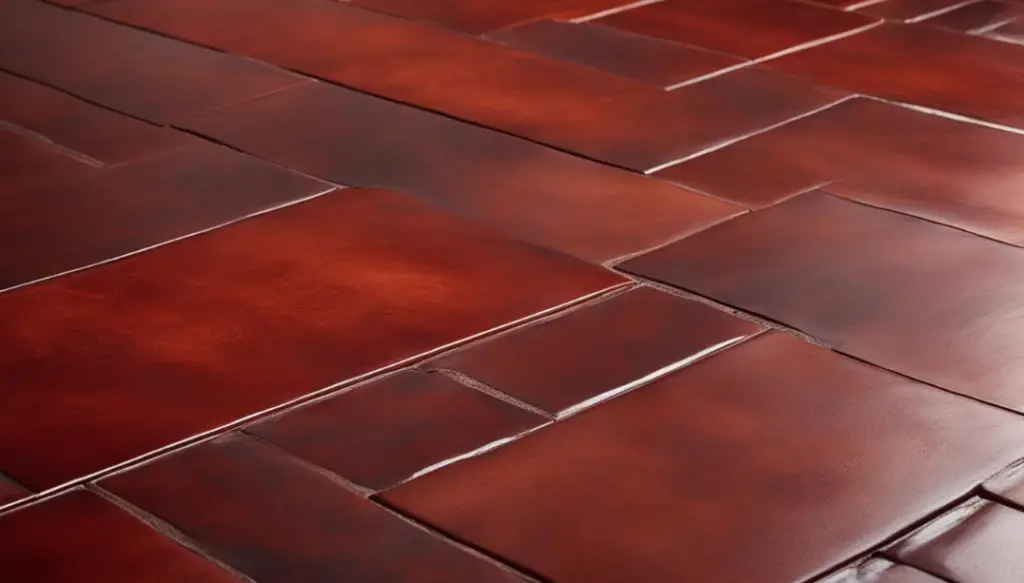

Brick: Types, Uses, Pros & Cons
Brick flooring is a popular choice, especially for outdoor spaces. It offers a rustic and charming look while being durable and low-maintenance. There are different types of brick flooring, including reclaimed brick, clay brick pavers, and brick veneer. Each type has its unique characteristics and applications.
| Type | Uses | Pros | Cons |
|---|---|---|---|
| Reclaimed Brick | Indoor and outdoor flooring, accent walls, fireplaces | Eco-friendly, unique character, durability | Difficult to source, high cost, uneven surfaces |
| Clay Brick Pavers | Outdoor patios, walkways, driveways | Durable, slip-resistant, low maintenance | Can be uneven, porous surface, prone to staining |
| Brick Veneer | Indoor and outdoor accent walls, fireplace surrounds | Lightweight, easy to install, cost-effective | Not as durable as solid brick, can look artificial |




















Brick flooring is a great choice for those who appreciate a natural and timeless look. Reclaimed brick offers a unique character and is an eco-friendly option. Clay brick pavers are slip-resistant and low maintenance, making them suitable for outdoor areas. Brick veneer is lightweight and easy to install, making it a cost-effective option for accent walls and fireplace surrounds. However, brick flooring can be uneven and porous, and some types of brick are difficult to source and can be expensive.
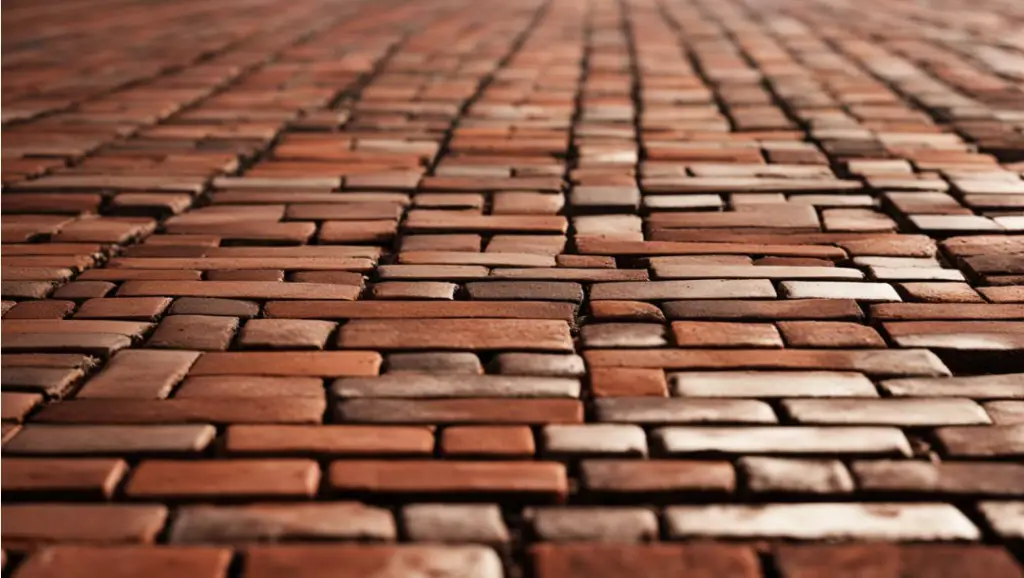

Consider the location and function of the space when choosing the type of brick flooring. Ensure that the brick is suitable for the climate and weather conditions in your area. With the right maintenance, brick flooring can last for years and add a warm and inviting feel to any space.
Stone Flooring, Cork Flooring, Carpet Flooring: Types, Uses, Pros & Cons
Aside from the traditional types of flooring, some unique alternatives may better suit your needs. Stone flooring is a durable option that offers natural beauty and unique patterns. Granite and marble are popular types of stone flooring, with each having distinctive coloring and veining. Stone flooring is often used in high-traffic areas due to its durability. However, it can be expensive and may require professional installation.
Cork flooring is an eco-friendly option that offers warmth and comfort. It is a renewable resource and provides a natural sound barrier. Cork flooring is available in different colors and patterns, with some options being water-resistant. It is a soft material, making it comfortable to walk on but can be susceptible to scratches and dents.
Carpet flooring provides a warm and cozy feel to a space. It is available in various textures, patterns, and colors, making it easy to match any decor. Carpet flooring is a good option for bedrooms and living rooms, as it provides insulation and reduces noise. However, it can be difficult to maintain, as it can easily attract dirt and dust.




















| Type | Uses | Pros | Cons |
|---|---|---|---|
| Stone flooring | High-traffic areas, kitchens, bathrooms | Durable, natural beauty, unique patterns | Expensive, professional installation required |
| Cork flooring | Living rooms, bedrooms, offices | Eco-friendly, renewable, natural sound barrier, soft | Susceptible to scratches and dents |
| Carpet flooring | Bedrooms, living rooms | A warm and cozy feel reduces noise | Difficult to maintain, attracts dirt and dust |


When considering the different types of flooring, it’s important to choose one that best fits your needs and lifestyle. Whether you prefer the durability of stone flooring, the eco-friendliness of cork flooring, or the comfort of carpet flooring, each option has its unique benefits and drawbacks. Select the one that best suits your home and budget to create an inviting and functional living space.
Conclusion
Now that you have explored the various types of flooring, their properties, uses, pros, and cons, you are better equipped to make an informed decision when choosing the right flooring material for your home.
When making your decision, consider factors such as the durability of the material, the maintenance requirements, and the overall look and feel you want to achieve in your space. Remember, flooring is an essential aspect of any room, and choosing the right material can significantly impact the overall aesthetic and functionality of the space.
Whether you opt for the elegance of marble flooring, the affordability of laminate, or the sustainability of bamboo flooring, choose wisely to create a beautiful and functional environment that meets your needs and preferences.




















FAQ
What is flooring?
Flooring refers to the permanent covering of a floor, providing a supportive and decorative surface. It serves as the foundation of a room and has a significant impact on the overall look and feel of a space.
What types of flooring materials are available?
There are various types of flooring materials available, including marble, vitrified tile, vinyl, hardwood, granite, bamboo, concrete, laminate, linoleum, terrazzo, red oxide, brick, stone, cork, and carpet.
What are the uses of marble flooring?
Marble flooring can be used in entryways, bathrooms, kitchen countertops, and other areas where an elegant and luxurious look is desired.
What are the pros and cons of marble flooring?
The pros of marble flooring include its aesthetic appeal, durability, and ability to increase the value of a property. However, it can be expensive, requires regular maintenance, and is prone to scratching and staining.




















What are the types of vitrified tiles available?
There are different types of vitrified tiles, including glazed vitrified tiles and double-charged vitrified tiles.
Where can vitrified tiles be used?
Vitrified tiles can be used in both residential and commercial settings, such as living rooms, bedrooms, offices, and retail spaces.
What are the advantages and disadvantages of vitrified tiles?
The advantages of vitrified tiles include their durability, low maintenance requirements, and wide range of design options. However, they can be expensive, prone to cracking under heavy impact, and slippery when wet.
What are the different types of vinyl flooring?
There are various types of vinyl flooring, including luxury vinyl planks (LVP) and vinyl sheets.




















Where can vinyl flooring be used?
Vinyl flooring can be used in different areas of the home, such as kitchens, bathrooms, living rooms, and basements. It is also suitable for commercial spaces like offices and retail stores.
What are the benefits and drawbacks of vinyl flooring?
The benefits of vinyl flooring include its affordability, water resistance, and easy maintenance. However, it can be susceptible to scratches, may fade over time, and may emit volatile organic compounds (VOCs) during installation.
What are the types of hardwood flooring?
Hardwood flooring is available in various types, including oak, maple, walnut, and many others.
Where can hardwood flooring be used?
Hardwood flooring can be used in both residential and commercial settings, such as living rooms, dining rooms, bedrooms, offices, and retail spaces.
What are the advantages and disadvantages of hardwood flooring?
The advantages of hardwood flooring include its natural beauty, durability, and long lifespan. However, it can be expensive, susceptible to moisture damage, and may require regular maintenance, such as refinishing.




















What are the types of granite flooring?
Granite flooring is available in various types, including black granite, white granite, and other color variations.
Where can granite flooring be used?
Granite flooring is commonly used in areas like kitchens and bathrooms due to its durability and resistance to heat and moisture.
What are the pros and cons of granite flooring?
The pros of granite flooring include its durability, natural beauty, and resistance to heat and moisture. However, it can be expensive, cold underfoot, and may require periodic sealing to maintain its appearance.
What are the different types of bamboo flooring?
There are different types of bamboo flooring, including solid-strand woven and engineered bamboo.
Where can bamboo flooring be used?
Bamboo flooring can be used in both residential and commercial spaces, such as living rooms, bedrooms, offices, and retail stores.
What are the advantages and disadvantages of bamboo flooring?
The advantages of bamboo flooring include its sustainability, unique appearance, and durability. However, it can be susceptible to scratches, and moisture damage, and may require regular maintenance to prevent fading.




















What are the types of concrete flooring?
There are different types of concrete flooring, such as polished concrete and stained concrete.
Where can concrete flooring be used?
Concrete flooring is commonly used in industrial, commercial, and residential settings, such as warehouses, showrooms, garages, and basements.
What are the advantages and disadvantages of concrete flooring?
The advantages of concrete flooring include its strength, durability, and low maintenance requirements. However, it can be hard underfoot, may crack over time, and may require sealing to prevent staining.
What are the types of laminate flooring?
There are different types of laminate flooring, including engineered wood laminate and plastic laminate.
Where can laminate flooring be used?
Laminate flooring is suitable for use in homes and businesses, such as bedrooms, living rooms, offices, and retail spaces.
What are the benefits and drawbacks of laminate flooring?
The benefits of laminate flooring include its affordability, durability, and ease of installation. However, it can be susceptible to moisture damage, may sound hollow underfoot, and cannot be refinished like hardwood.




















What are the types of linoleum flooring?
There are different types of linoleum flooring, including sheet linoleum and tile linoleum.
Where can linoleum flooring be used?
Linoleum flooring can be used in various areas of the home, such as kitchens, bathrooms, and laundry rooms.
What are the advantages and disadvantages of linoleum flooring?
The advantages of linoleum flooring include its eco-friendly properties, durability, and easy maintenance. However, it can be susceptible to scratches and dents, may require periodic sealing, and can fade over time.
What are the types of terrazzo flooring?
There are different types of terrazzo flooring, including traditional terrazzo and engineered terrazzo.
Where can terrazzo flooring be used?
Terrazzo flooring can be used in residential and commercial spaces, such as lobbies, hallways, and other high-traffic areas.
What are the pros and cons of terrazzo flooring?
The pros of terrazzo flooring include its unique and artistic appeal, durability, and ease of maintenance. However, it can be expensive, time-consuming to install, and may require periodic polishing to maintain its shine.
What are the types of red oxide flooring?
There are different types of red oxide flooring, including cement red oxide and epoxy red oxide.
Where can red oxide flooring be used?
Red oxide flooring is commonly used in heritage homes and other traditional settings where a rustic and traditional look is desired.
What are the advantages and disadvantages of red oxide flooring?
The advantages of red oxide flooring include its traditional look, durability, and low maintenance requirements. However, it can be prone to cracking, difficult to repair, and may require periodic reapplication of sealants.




















What are the types of brick flooring?
There are different types of brick flooring, including reclaimed brick and clay brick pavers.
Where can brick flooring be used?
Brick flooring is commonly used in outdoor areas, such as patios, pathways, and driveways.
What are the pros and cons of brick flooring?
The pros of brick flooring include its rustic and charming look, durability, and low maintenance requirements. However, it can be prone to cracking, may be difficult to clean, and may become slippery when wet.
What are the types of stone flooring?
Stone flooring is available in various types, including granite, marble, limestone, and travertine.
Where can stone flooring be used?
Stone flooring can be used in different areas of the home, such as kitchens, bathrooms, living rooms, and outdoor patios.
What are the pros and cons of stone flooring?
The pros of stone flooring include its natural beauty, durability, and ability to increase the value of a property. However, it can be expensive, porous, and may require regular sealing to prevent staining.




















What are the types of cork flooring?
There are different types of cork flooring, including glue-down cork tiles and floating cork planks.
Where can cork flooring be used?
Cork flooring can be used in various areas of the home, such as living rooms, bedrooms, offices, and playrooms.
What are the advantages and disadvantages of cork flooring?
The advantages of cork flooring include its sustainability, softness underfoot, and noise-reduction properties. However, it can be susceptible to scratches and moisture damage, may fade in direct sunlight, and requires regular sealing to maintain its appearance.
What are the types of carpet flooring?
There are different types of carpet flooring, including plush carpet, Berber carpet, and frieze carpet.
Where can carpet flooring be used?
Carpet flooring is commonly used in bedrooms, living rooms, family rooms, and other areas where comfort and warmth are desired.
What are the advantages and disadvantages of carpet flooring?
The advantages of carpet flooring include its softness, insulation properties, and wide range of design options. However, it can be prone to staining, may harbor allergens and dust mites, and requires regular cleaning and maintenance.
Happy Learning
Also, Read,
How to unclog a toilet with or without a plunger

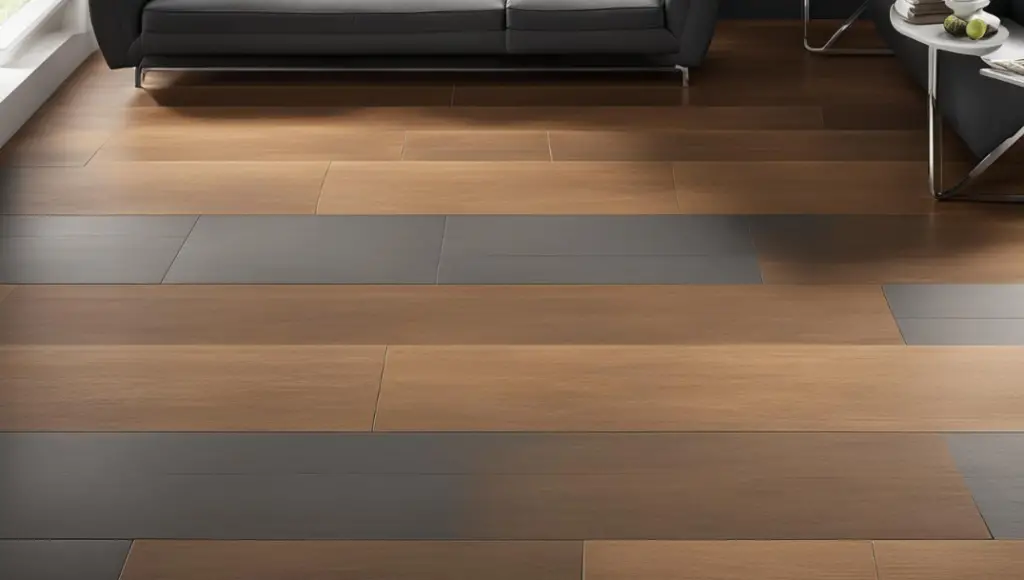
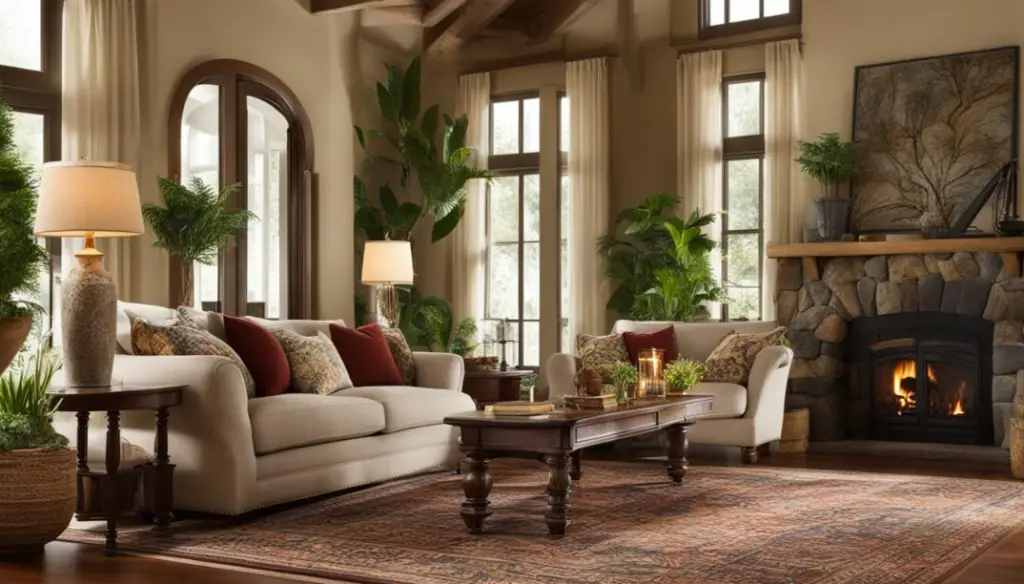
The fact that you mentioned laminate flooring’s cost, durability, and ease of installation piqued my curiosity. It can’t be refinished like hardwood, sounds hollow underfoot, and is vulnerable to moisture damage. My house seems to be losing part of its tile flooring, therefore I would want to replace it. I appreciate the advice you provided on organizing a smooth floor installation, and I’m hoping to locate a reputable service provider for my home soon.